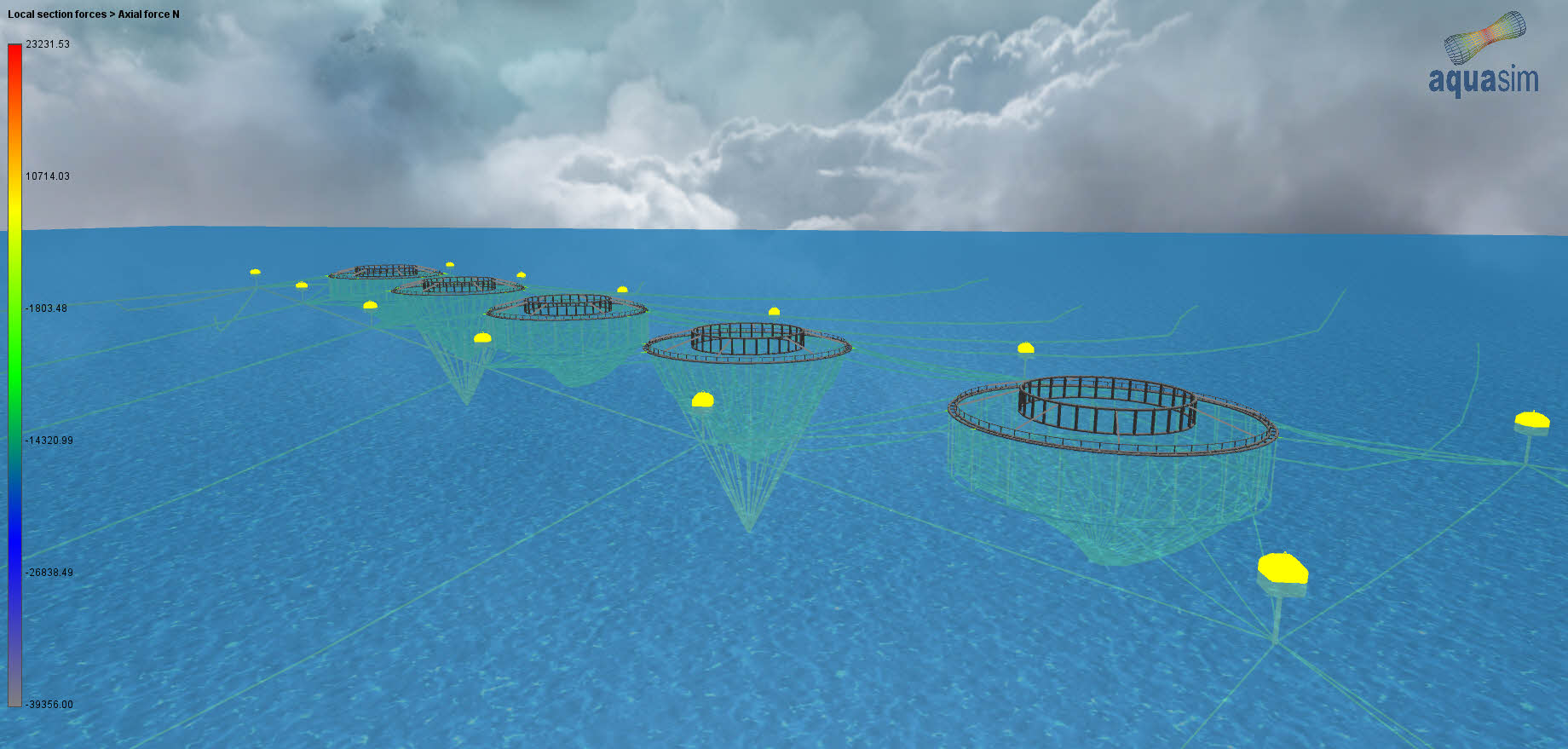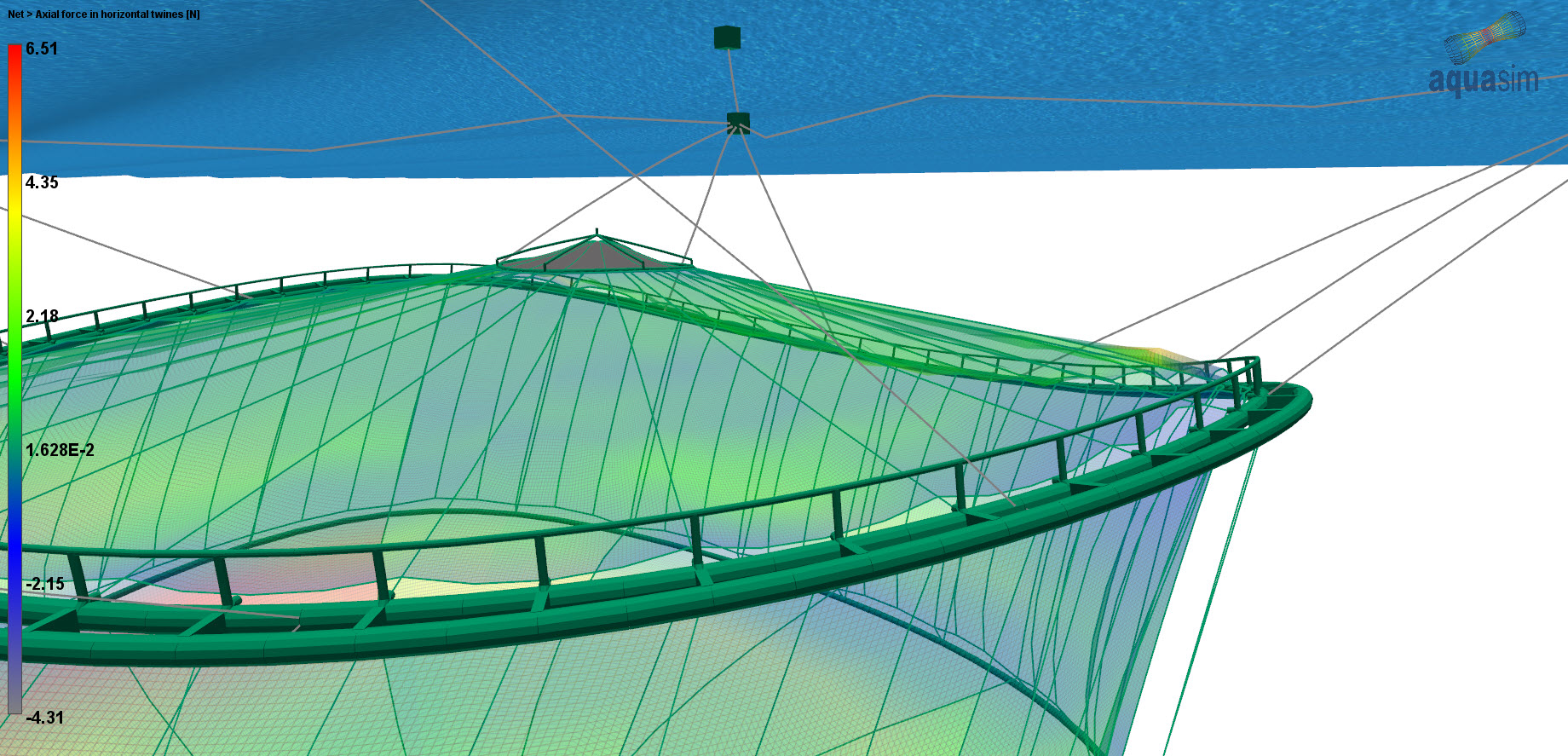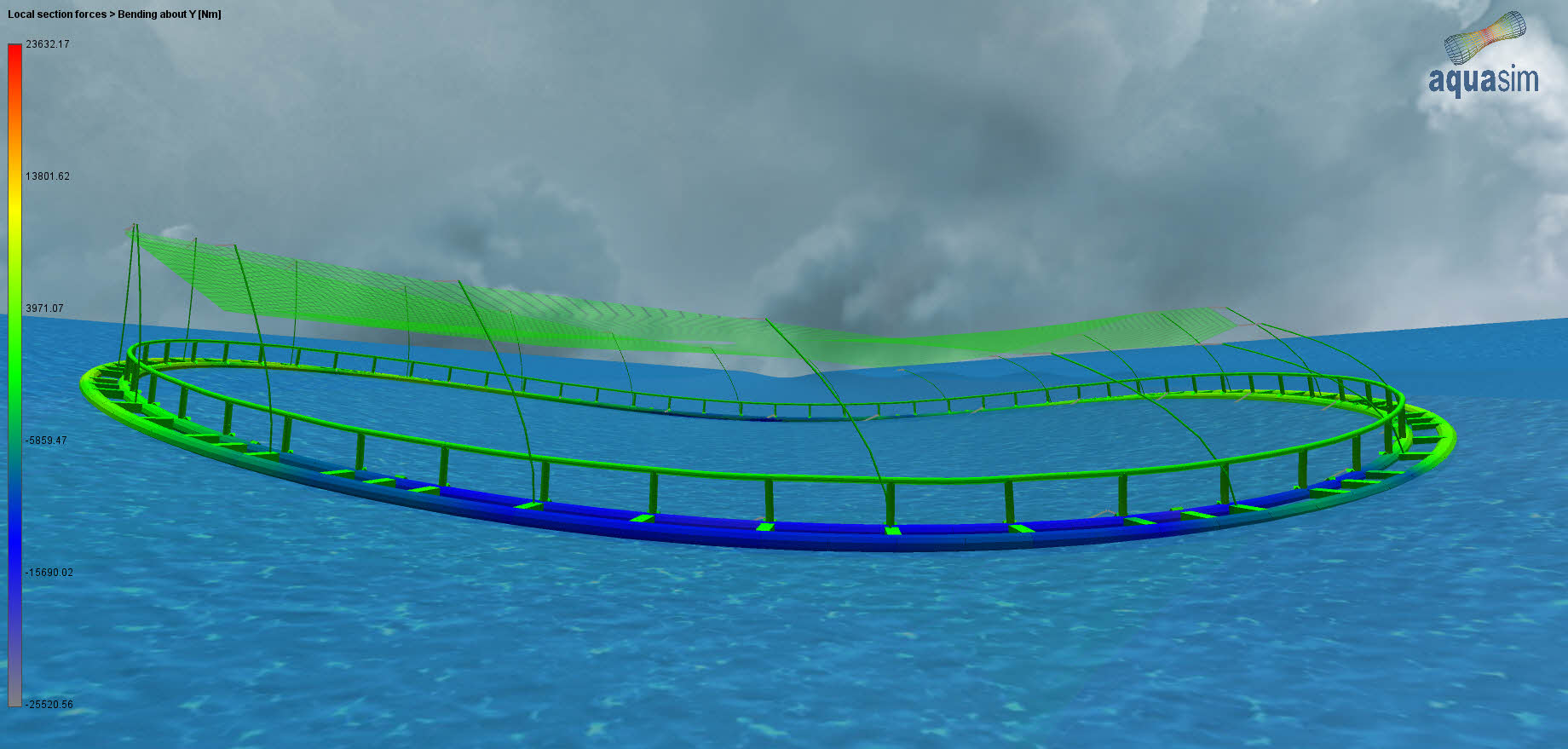Increase the efficiency and safety of the fish farm plant with the use of AquaSim. Most mooring- and structural analyses related to the Norwegian aquaculture industry utilize AquaSim to determine the capacity of the plant. Well suited for slender structures exposed to large deformations and nonlinear behavior. Specialized element models for rendering nylon net and tarps in combination with beams and trusses makes AquaSim unique in its capabilities.
Typical areas of use in the Aquaculture industry:

Semi-closed systems
Semi-closed systems consist of an impermeable barrier in combination with open net. The aim of such systems is to improve the environment and to protect the fish from parasites such as sea lice. Lice skirt is an effective tool for reducing challenges with sea lice. But at the same time, it contributes to enlarged forces in both the net pen and mooring system. This is due to water is prevented from flowing through the skirt and must find a way around the obstacle. AquaSim has a special developed tool for modelling and analyzing this type of impermeable skirts.
Read more about Semi-closed systems

Closed systems
Closed systems applied in the aquaculture industry consist of a fully impermeable barrier between the fish and open sea. These types of structures will introduce other load scenarios compared with classical open-net cages. Optimize your idea to meet the harsh conditions at sea by applying AquaSim early in the design process.
Read more about Closed systems

Mooring analysis
A mooring analysis documents how a moored system responds to environmental loads. This is an effective way to reveal the capacity of the mooring components. Utilizing truss-, beam- and membrane-elements to render ropes, chain, floating collars, and nets, AquaSim calculates the nature of any configuration.
Read more about Mooring analysis

Net structure
In classical fish farm plants, the net is the only barrier between the fish and open sea. Ensuring sufficient capacity is of importance regarding fish escapes. With AquaSim, the analyst may predict forces and stresses in the net and associated equipment for customized locations and environmental loads.

Floating barges and rafts
Floating barges and rafts are simple in their design but are equipped with advanced tools for the daily operation of a fish farm plants. Due to the weight and size, a barge may behave much like a float in water. Making the mooring exposed to load peaks from the barge response. AquaSim may be applied for detection of probable load peaks and verification of the mooring’s contribution to global moment in the hull.
Read more about Floating barges and rafts

Submerged systems
Submerged systems means the net barrier between the fish and open sea is even more critical. AquaSim is widely used for analysis of submerged systems to find response from the loads they are exposed to whether it is snap load from buoys through the bridles of local effects within the net. With AquaSim, the analyst may predict forces, stresses and motions to find applicability of your submerged system for customized locations and environmental loads.
Read more about Submerged systems

Operations
AquaSim predicts forces and stresses in time-domain, making it suited for analysis of operations. It may be applied for wellboat operations, loading- and deloading, lifting operations and many more. Analysis of operations contributes to increased safety level of the fish farm plant.

Extra equipment
Additional- and extra equipment are technical aids that are mounted on aquaculture cages to facilitate operations or improve the environment for fish. This can be winching equipment, dead fish removal, deep-water feeding systems, lights and so on. Such equipment will in varying degrees impose static and dynamic loads on the cages.
Read more about Extra equipment
